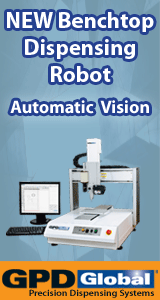Printed Circuit Board Assembly & PCB Design Forum
SMT electronics assembly manufacturing forum.
- SMTnet
- »
- Electronics Forum
- »
- Vectra Wave
Vectra Wave
![]() My company just purchased a Vecta (E-vert) wave soldering m...
- May 02, 2000
by
John Sims
My company just purchased a Vecta (E-vert) wave soldering m...
- May 02, 2000
by
John Sims
![]()
![]()
![]() Which wave solder flux are you using and what types of preh...
- May 03, 2000
by
C.K.
Which wave solder flux are you using and what types of preh...
- May 03, 2000
by
C.K.
![]()
![]()
![]() John - CK can probably help you further once you answer tho...
- May 03, 2000
by
SONO-TEK CORPORATION
John - CK can probably help you further once you answer tho...
- May 03, 2000
by
SONO-TEK CORPORATION
![]()
![]()
![]() We are using NR300F from Alpha. Topside board temp is 220 ...
- May 05, 2000
by
John Sims
We are using NR300F from Alpha. Topside board temp is 220 ...
- May 05, 2000
by
John Sims
![]()
![]()
![]() I'd have to disagree with the Electrovert applications guy....
- May 05, 2000
by
C.K.
I'd have to disagree with the Electrovert applications guy....
- May 05, 2000
by
C.K.
![]()
![]()
![]() I read my posting again, and it didn't sound right....what ...
- May 05, 2000
by
C.K.
I read my posting again, and it didn't sound right....what ...
- May 05, 2000
by
C.K.
![]()
![]()
![]() I was running the conveyor at 3.75 when we started the disc...
- May 08, 2000
by
John Sims
I was running the conveyor at 3.75 when we started the disc...
- May 08, 2000
by
John Sims
![]()
John Sims
- SMTnet
- »
- Electronics Forum
- »
- Vectra Wave







